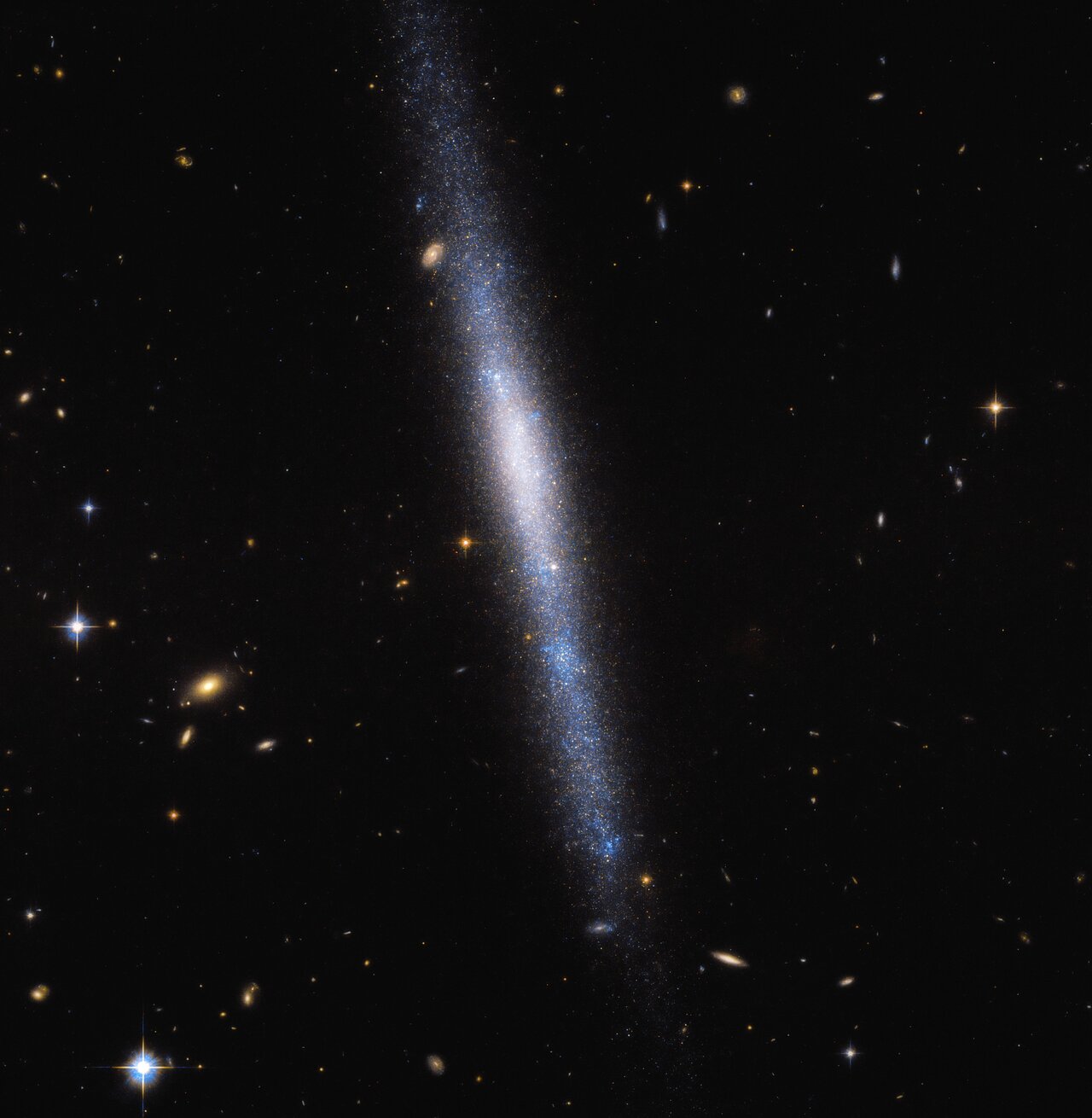Cosmic Cascade Poem by Harley White
Cosmic Cascade
‘To see, hung o'er the torrent's wall,
three thousand feet, that waterfall,
vault sheer, from heavens high, you'd say
the Milky Way' in bright array
‘was tumbling down, cascading star
on star', thus glimpsing from afar
the mountain Incense-Burner Peak
ashimmer in sunlit mystique,
to Chinese poet, Li Po, quote,
from olden times of yore remote,
as spake his lyric long ago,
could be describing astral flow
of galaxy in Sextans found
where sparkling stellar realms abound
as though outpouring in a stream.
Blue tinted hues in color scheme
of stunning image on display
the hotter younger stars portray
apparent in its lower part
as shown in Hubble's astral art.
Some six times hotter than the sun
those azure orbs with heat to shun
create a beautiful blue haze
belying burn of scorching blaze;
instead with cooling water guise,
its look has captured astro-eyes
so star-struck gazers could admire
forget-me-not deluge of fire.
Called UGCA One Nine Three
it's cataloged for galaxy
that's viewed in northern hemisphere
of skies from planet earth where we're
on momentary center stage,
a tiny passage on a page
of ceaseless volume being writ
or improvised telluric skit…
Ah poetry in onward surge,
will verses evermore emerge
from cosmic lyric repertoires
that sing the wonderment of stars?

This poem has not been translated into any other language yet.
I would like to translate this poem
This poem and your note are very much interesting and informative...I bow to your passion for cosmic science....kudos Harley White